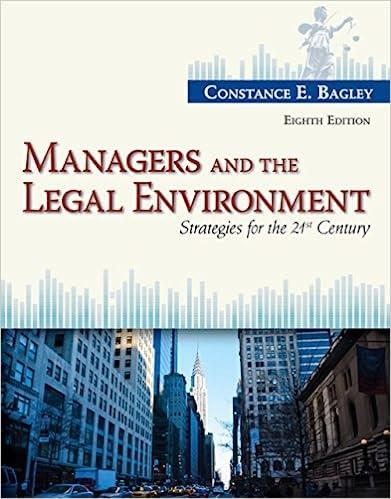Jeffrey Feaster bought a gun from Ron's Guns, Inc. Feaster was knowledgeable about firearms and planned to
Question:
Jeffrey Feaster bought a gun from Ron's Guns, Inc. Feaster was knowledgeable about firearms and planned to shoot the gun for recreation one day. He drove to a friend's house, where he loaded the gun and lowered the hammer from the half-cock safety position into the "down" position, allowing the gun to be fired. (When the gun is in the half-cock position, it cannot be fired without pulling the trigger.) Feaster then put the gun in the pocket of his jeans. Feaster ultimately decided not to shoot the gun that day. He drove home, took off his jeans, which still had the loaded gun in the pocket, and went to bed. The next morning, his girlfriend, Marian Smith, picked up the jeans. After realizing they were dirty, she threw them on Jeffrey Feaster bought a gun from Ron's Guns, Inc. Feaster was knowledgeable about firearms and planned to shoot the gun for recreation one day. He drove to a friend's house, where he loaded the gun and lowered the hammer from the half-cock safety position into the "down" position, allowing the gun to be fired. (When the gun is in the half-cock position, it cannot be fired without pulling the trigger.) Feaster then put the gun in the pocket of his jeans. Feaster ultimately decided not to shoot the gun that day. He drove home, took off his jeans, which still had the loaded gun in the pocket, and went to bed. The next morning, his girlfriend, Marian Smith, picked up the jeans. After realizing they were dirty, she threw them on the floor. The gun then went off, striking Smith in her legs.
Smith sued Ron's Guns, Inc., asserting that the gun was defective under the Connecticut Products Liability Statute. The statute imposes liability when the product is "unreasonably dangerous" to the ordinary buyer "with the ordinary characteristics common to the community as to its characteristics" (an objective standard). Using this consumer expectation test, what factors would the court consider when deciding whether the gun was unreasonably dangerous? Liability may also be imposed if the product did not include adequate warning of its unreasonably dangerous propensities. Would a failure to warn that the gun can be fired if the half-cock safety is off constitute a defect, or is this an "open and obvious danger" that eliminates the need for a warning?
Step by Step Answer:

Managers And The Legal Environment Strategies For The 21st Century
ISBN: 9781285860374
8th Edition
Authors: Constance E. Bagley





